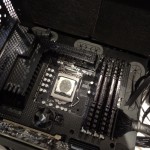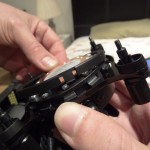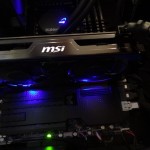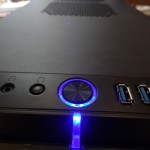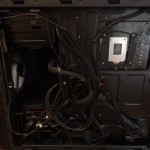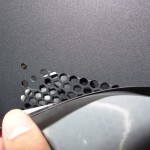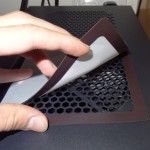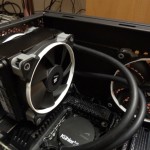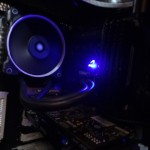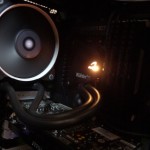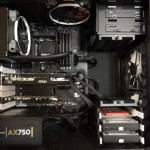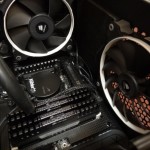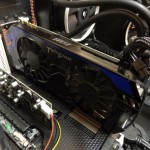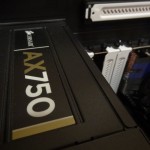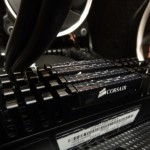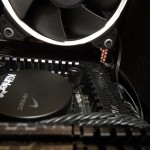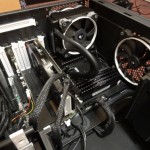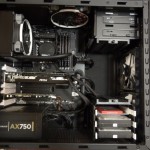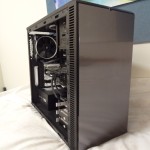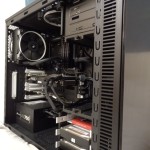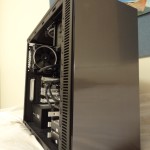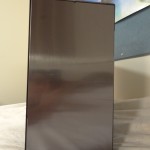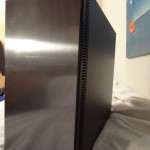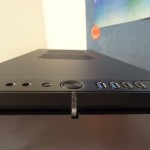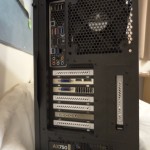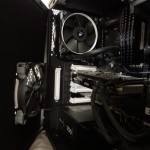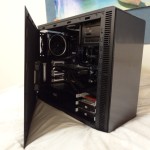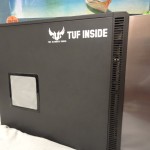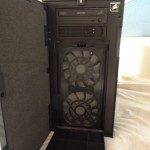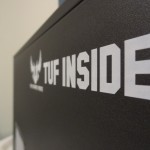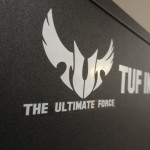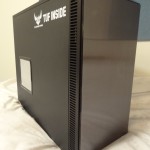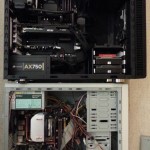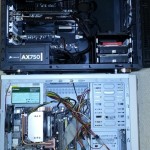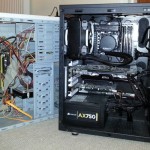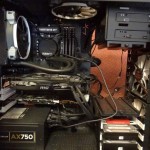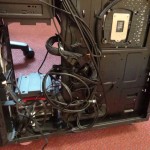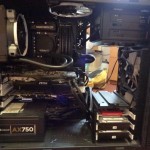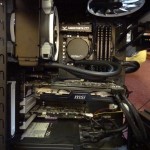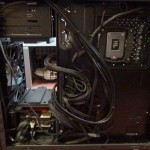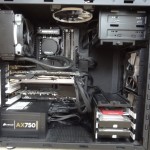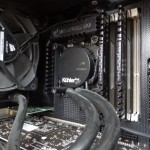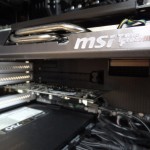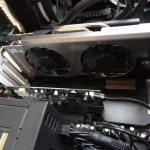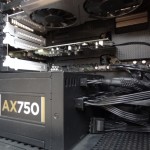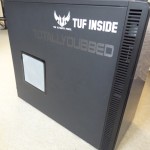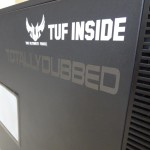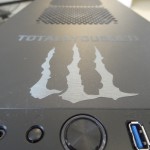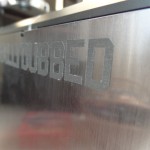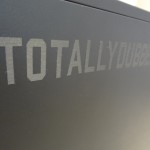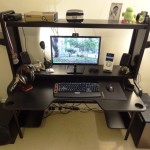Introduction
In September 2012, I thought to finally change and upgrade my PC. It had been over 2-4 years (the 2 year gap is due to me interchanging parts) that I had my old PC, and I thought to myself, it was a time to catch up with current technology and more so a PC that would be long lasting.
My old PC, which I had was perfectly fine, and worked brilliantly. I have currently formatted my old PC, and given it to my mother.
Here are my old PC specs:
-Asus P5K Premium motherboard
-Intel E6500 processor Overclocked to 3.53 GHz (Stock 2.93 GHz)
-OCZ Platinum 800 MHz 2GB RAM (2x1GB Modules)
-Nvidia 7600GT Graphics Card – 512 MB
-Artic Freezer Pro 7 CPU cooler
-2TB of HDD’s @7200 RPM (2x1TB)
-Asus Xonar D1 soundcard
-Asus PW201 20″ 1080i Monitor with 8ms at 60hz
As you can see from the above, my PC was out-dated, but it still did my video rendering and worked brilliantly as a basic PC.
I wasn’t able to game on it however, due to my graphics card, and CPU not being capable enough to support recent games like Battlefield 3 and Borderlands 2 – thus when I bought the parts for my new PC, I thought of going “all-out” and buying parts, that come 2-3 years, will still be usable and compatible, before having to upgrade again.
I should also say, I used to be a big PC gamer, back in the days of Battlefield 2142, however with decreasing amount of pocket money, I thought to save up on constantly buying PC parts, and buying an Xbox 360 instead. I can’t stress the amount of money I have saved over the years of not PC gaming. I thus, I’m not bias towards one or the other. I really love gaming on both machines – sure my new PC looks fabulous, but it came at a hefty price too.
My 2012 PC Build
I spent around £1300 including monitor, and all accessories for my new PC. I could have spent less, by buying some parts from America for example, however I thought to buy most of my parts from big resellers, and ones that I can go back to come 3 years. For those wondering how I could afford such a PC – it came from me saving up during my work placement year, and thus finally splashing out on a new PC. By no means am I rich or have rich parents to fund expensive habits. Just thought to mention that, in case some people would get the wrong impression.
There were however some parts I kept from my old PC:
-2x1TB HDD’s @7200 RPM – I kept these two HDD’s simply because I would be using them as my storage space, whereas before I was using one of the HDD’s as my primary boot device.
UPDATE 10/10/2013:
Bought a Seagate Barracuda 3TB 7200RPM SATA 6Gb/s 64MB Cache for £100 from OCUK to replace my 2x 1TB drives! A very pleasant addition to my system!
I also kept some peripherals:
-Logitech Z-5500 sound system (An affordable, yet amazingly good sound system)
-Logitech K350 Wave keyboard (A great multimedia keyboard)
-Logitech MX Revolution (The best mouse I have ever used and tried)
-Epiphany Acoustics EPH-02D (USB DAC that I use for listening to my headphones on the PC)
I also kept my OS:
-Windows 7 Home Premium (I might upgrade to Windows 8, at a later date)
Apart from the above 7 parts, I bought everything new. I even had to buy a new camera for Skype calls, as my previous monitor came with a in-built camera, whereas my new one didn’t.
Here are my current PC specs, as of November 2011 (Highly doubt anything will change in years to come from the following list) – I will also list where I bought it from, the price I paid when buying it, and a link to my review over on Overclock.net:
–Asus Sabertooth Z77 from Scan UK for £175
–Intel I7 3770K from Amazon UK for £255
–NVIDIA MSI GTX 660ti OC Power Edition from Overclockers UK for £240 with a free Steam download of Borderlands 2 – In September 2013 I bought the MSI GTX680 OC Twin Frozr III for £215 in September 2013 and sold my MSI GTX660ti PE OC for £145 – meaning an outstanding £70 upgrade for the GTX680!
–Corsair Vengeance 16GB (4x4GB) CMZ16GX3M4A1600C9 with 9-9-9-24 2N (CAS9) timings at 1600 MHz from Scan UK for £62
–Corsair Force GT 120GB SSD from Fry’s USA for £60 – this is the only part I bought from overseas (I was on a 1 week deal at the time, and it was too cheap to say no)
-Samsung SH-S222B Optical Drive from Overclockers UK for £14
–Antec KÜHLER H2O 920 Liquid Cooler from Scan UK for £67
–Corsair AX750 Power Supply from Scan UK for £125
–Corsair AF140 Silent Fans from Overclockers UK for £34 (£17 each, thus buying two of them)
–Corsair SP120 Quiet edition from Amazon UK for £17 (£8.50 each, thus buying two of them)
–Fractal Design Define R4 Midi Tower Case Titanium Grey from Overclockers UK for £100
–Asus Xonar DX Soundcard from Overclockers UK for £55
–DEMCiflex 140mm Dust Filter – For my side intake from Overclockers UK for £10
–OcUK Mega Mat Medium from Overclockers UK for £4
–LG IPS234V 23″ 1080P Monitor with 5ms at 60 Hz from Amazon UK for £120
-Logitech C615 1080P Webcam from Amazon UK for £50
So as you can see from the above, my PC specs are up-to-date with current setups and more so is a PC that not only runs very fast, but also very silently.
I should also mention before talking about the build itself, I had a few hick-ups with some of the parts I bought:
-The Intel I7 3770K came with a broken stock fan, which I then received another for free as a replacement (fan only) – I have to thank Scan UK for sending me a spare fan, despite me buying the processor from Amazon UK
-The Fractal R4 case had some sort of corrosion at the back of the case – Overclockers UK were very good in arranging a pick-up of the old case and giving me a new case. However it should be stated that DPD, as courier service were a joke of a service to deal with.
-One of my DIMM modules on the Corsair Vengeance was faulty. I only realized after over a month of trying to overclock my PC – then giving up, and realizing Prime 95 would still fail on stock settings – after testing for over a week, I found out the bad DIMM module, RMA’ed it with Scan UK, who were a pleasure to deal with, and finally got 4 working DIMM modules.
-Drivers for the Xonar DX didn’t work, and if it were for the Unifying Drivers provided by CarvedInside on BrainBit, I would have returned the soundcard
As you can see, there were a fair few problems I had to deal with, especially the RAM problem, was a real pain in the back side, as it felt that overclocking on an I7 was impossible, when in fact it was a RAM module that wasn’t letting me even run stable at stock speeds, let alone overclocked ones.
My advice to anyone building a PC or even buying a pre-built one would be to TEST all your equipment you receive from the factory, before playing around with it. Be it gaming, or overclocking.
So, now I’ll spam a lot of pictures, where you’ll be able to see my PC build, progress as time went by, and the “final product” with Prime 95 and BIOS settings which will be linked after the pictures – be warned, there are a lot of pictures.
I will also at the end of the pictures explain a little about the build, the choice of parts, and my honest opinion (besides the reviews I wrote) for each part!
I should also note, that I overclocked the CPU from 3.53 (up to 3.90) Ghz stock to 4.50 Ghz. I also added 0.5v to the RAM, in order for it to run stably, without any problems.
Pictures
I hope you enjoyed all the pictures!
Now unto a little explanation of what was going on
From the pictures there were couple of things, if you noticed with your keen eyes, that occurred.
First of all, the case that was initially pictured, on a wooden floor, was actually returned, due to the corrosion problems that were there. As said before it was quickly turned around by OCUK. I have to say I was really disappointed in Fractal not QC’ing their products, and more so, providing no support whatsoever to me, with no sort of explanation.
Secondly, the CPU fan installation was due to my cousin and I thinking it would be a good idea, before getting into the trouble of adding the Antec 920, to put in the stock CPU fan – we both knew it wasn’t something that could properly cool an I7 3770K, but to boot, install OS, it should be fine.
However, as stated before, the fan didn’t work, so after trying to turn it on, we quickly realized the motor was stuck and not allowing the fan to spin. We thus quickly shut the PC off, tried it on my old PC (fan off the CPU), and the same thing occurred. We thus, went ahead with the Antec 920 installation.
The Antec installation was no easy task – as the installation guide was completely outdated, both on the manual and on review/installation guides online.
I thus, not long ago, created my own Antec 920 installation guide on OCN. I think this guide, covers everything you need to know on adding an Antec 920 to your system. Hopefully it should be helpful to you, as I found it very hard to install the Antec 920, as it was my first ever liquid cooling unit I ever installed.
A few other things that I did wrong, and/or changed till now:
-My old Xonar D1 soundcard didn’t fit into any of the PCI-E slots. Thus leading me into buying a Xonar DX, which is the same soundcard, but a PCI-E version of it
-The Antec 920’s pump at the top of the radiator, rather at the bottom – now it is at the bottom, as it helps bubbles, and is something suggested for people making custom loops in their custom watercooling systems
-Antec 920 fans were put in the wrong direction. The fans were blowing into the case at one point, whereas they should have been blowing outwards
-Antec 920 fans were both replaced by the Corsair SP120’s – the SP120’s provide the same cooling to the CPU as the Antec fans did, but at a much quieter level
-Fractal fans both ended up as intakes in the front of the case
-Two Corsair AF140’s were added, one as outtake at the top of the case, the other as an intake at the side of the case
-Removed both 35mm Asus mini assist fans. Although very slightly beneficial for temperatures (5 Celsius cooler) – I found that these fans were high-pitched and extremely annoying, even on their “silent profile”. I also found that, I ran P95 for 8hrs straight, with the fans on, and then switched off the PC, got the fans out completely, and then ran P95 for a further 4hrs, and the temperature difference was only 5c. Now in real life situations, I wouldn’t ever be going to those extremely high temps that prime puts my PC through. So why have annoyingly loud fans to disturb me, whilst they won’t actually make that much of a difference to my temperatures? So I got rid of them completely (not pictured)
-Antec 920 light is now permanently off, as it stays on even when the PC is off, and I didn’t want that
-DEMCiflex 140mm Dust Filter was added for the side fan intake – it provides a very easy yet effective dus cover for your PC
-Removed front panel audio connection from Fractal case to soundcard, as I never intend to use the fron panel audio jacks
-Changed my Mouse to the Anker Gaming mouse – after over 2 years of using the MX Revolution, the Anker is a better more versatile mouse – Here’s my review of it
-Redid the cable management for a nice tidier PC look
-Got rid of the stock thermal paste on the Antec 920, and replaced it with the Arctic MX-2, a report on the thermal paste included has been documented by me
-Bought the MSI GTX680 OC Twin Frozr III for £215 in September 2013 and sold my MSI GTX660ti PE OC for £145 – meaning an outstanding £70 upgrade for the GTX680!
As you can read, there were a few changes made overtime to the actual hardware components. To summarize, my fan orientation is:
-2x Fractal intake at the front
-1x AF140 outtake to the top
-1x AF140 intake to the side
-2x SP120 acting as push/pull as intake for the Antec 920
I found this to give me good temperatures and more so good airflow through the case.
Now for overclocking itself, I found it extremely hard to do, but there was one very simple reason, and that was due to me having had a single faulty DIMM module to begin with. Meaning OC’s would fail, whereas in reality, they weren’t the OC’s failing, just windows/P95 detecting an actual hardware problem with my PC.
If you, unlike me, don’t have any problems, and run a similar setup to mine – I have my full BIOS, with Prime 95 running stable for over 24hrs at my overclocked 4.50 Ghz. From that link you’ll be able to see a good overcloking guide written by the user “Swag” and my screenshots too.
Overclocking is ridiculously easy, but extremely long to do. Patience and persistence is the key to having a successful overclock.
I would like to say that building a PC, although it might look hard, is very much easy. You don’t have to be a technician nor a professional to do so. Of course, if you are a technician in the field, it will be much easier. However, for your average joe, I’m pretty sure if they have the slight interest in computers, that building your very own custom built PC, is not only fun, but very much rewarding. The amount I’ve learnt from building this PC, is beyond me explaining it. Put it this way, you don’t need to know how a processor handles its voltages and what it does with the capacitors, however you should know what the limits of your processor are – in other words, you don’t have to get too technical about all of it.
For the same spec PC, but pre-built I would have looked a spending over £1800. I saved myself around £500 by doing it on my own, and I’m actually glad that I did – despite the many set-backs and the problems I occurred down the road.
Here is a video look at my PC, and the comparison to my old PC
(The video doesn’t fully reflect how my PC looks now, as I’ve changed the fans, their orientations/positions and added the DX soundcard, thus the pictures towards the end really depict how my PC looks like now)
Finally, I would like to thank the online community, but also a huge thanks to my friend Sam for helping me throughout the process of my build, and last but definitely not least my cousin for helping me choose components and helping me assemble the PC.
I hope this build log was enjoyable to read and see, and a huge thanks to all those involved.
–TotallydubbedHD
























































